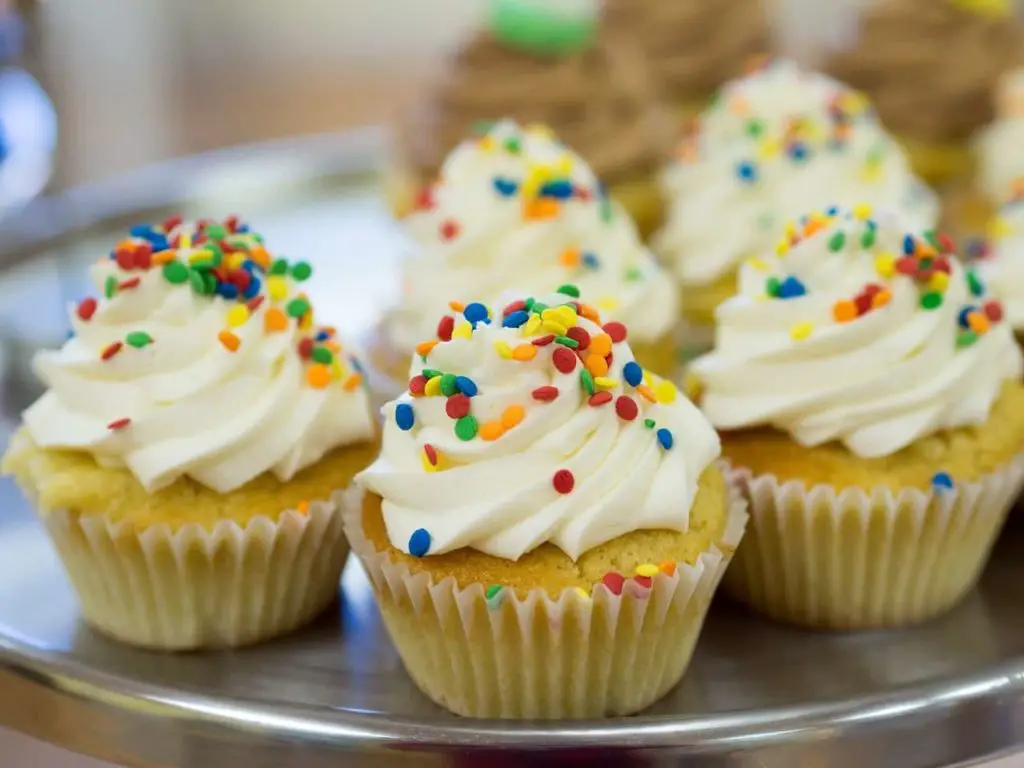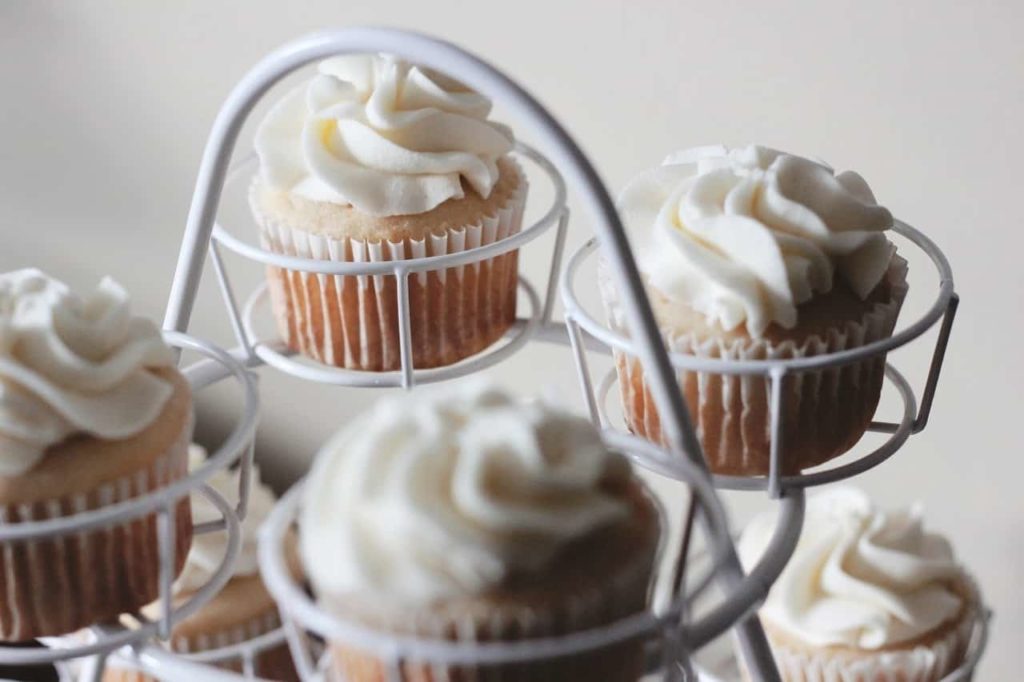Buttercream is a very versatile and even vital component of many cakes, whether that’s as a filling, used to sandwich two sponges together, or as a frosting to finish off that perfect cake.
It can be tricky to get buttercream frosting right, as a lot can go very wrong, including making too much to begin with. If you have a lot of leftover buttercream icing, it is worth knowing that you can freeze it without a lot of trouble.

Having said that, some types of buttercream frosting freeze better than others, depending on the base used, and the other ingredients.
Here’s everything you need to know about freezing buttercream frosting.
Different Types Of Buttercream
American Buttercream
American buttercream is one of the easiest types to make, as it doesn’t require any heat – just a lot of beating. You can recognize it by its soft yellow color, and the way it holds its shape, as well as its creamy texture.
American buttercream is usually made with powdered sugar, while the rest call for granulated sugar instead.
French Buttercream
One of the more difficult and more decadent forms of buttercream to get right, French buttercream is instantly recognizable with its bright yellow form and velvety texture.
In order to make French buttercream, you need to make hot sugar syrup, and add it to the egg yolks, without the heat scrambling the eggs (see also Can You Freeze Scrambled Eggs?).
It’s worth noting that French buttercream starts to lose its shape when exposed to warm temperatures.
Italian Buttercream
If you do need a buttercream frosting which can hold its own in a warm kitchen, Italian buttercream is the one to go for. You can recognize it by its nearly white hue, and it also requires making a hot sugar syrup.
Swiss Buttercream
Swiss Buttercream is similar to Italian buttercream in that they both use the whites of the egg instead of the yolks. Swiss buttercream is much easier to prepare, as the hot sugar isn’t used. Instead, the mixture is heated in a double boiler.
German Buttercream
German buttercream is also known as pudding buttercream, or custard buttercream, thanks to its custard base. It contains less sugar than American buttercream, and it’s also easier to make than Italian or Swiss buttercream.
Two Different Ways To Make Buttercream
While there are different types of buttercream, there are only two ways to make buttercream, and each of the above types can be divided into these two categories.
Buttercream Made With A Sweet Base
American and German buttercream fit into this category. The process involves using custard or a pudding base (see also Freezing Pastry Cream), which is added to beaten butter to form the buttercream.
Buttercream Made With An Egg Foam Base
French, Swiss, and Italian buttercream fall under this category. All of these are made by incorporating softened butter into egg foam or meringue to form the buttercream.
How To Freeze Buttercream
It really couldn’t be simpler. Simply decant the leftover buttercream frosting into a heavy-duty, resealable freezer bag, getting rid of any excess air. Seal it, label it, and put the bag into the coldest part of the freezer.
To ensure the buttercream is as lovely as possible when it thaws, freeze it as soon as you’ve made it for best results.
Once frozen, buttercream frosting (see also Freezing Cream Cheese Frosting) will last a maximum of 3 months in the freezer. As always, use it within a month of freezing for best results.
Tricks To Help You Freeze Buttercream Frosting Right The First Time
The Importance Of Room Temperature
If you’ve ever made a meringue, you’ll know that temperature is key.
For example, you can separate the yolk from the white much easier if you do it while the eggs are cold, but everything comes together a lot faster in making buttercream if you make sure your ingredients are at room temperature.
It also prevents the ingredients from separating, making for much smoother buttercream, and this is especially important when you want to freeze some buttercream for later.
Get The Consistency Of Butter Right
This is probably the most tricky but also vital part of making buttercream to master it. The butter should be soft enough so that it breaks up easily, but not so soft it becomes oily.
If you do add oily butter to the mix, it will curdle in the mixer, and the whole consistency will turn out grainy. If it’s grainy before it goes into the freezer, it will be the same when it comes out.
Stop Curdling From Starting
You can follow all the ‘rules’ to get the perfect consistency of buttercream, and sometimes the stars just don’t align, and the mixture becomes curdled anyway.
This often happens, and the thing to do is to restrain yourself from turning off the mixer and adding things in order to fix it. Keep mixing it, and soon enough, it should turn lovely and velvety.
Use The Right Sugar For The Right Buttercream Frosting
It may or may not come as a surprise, but the type of sugar you use for the buttercream frosting will alter the final outcome.
Different types of buttercream call for different types of sugar, so make sure you use the right sugar for the right recipe. American buttercream has a trademark sweetness that only comes from powdered sugar, giving it a much lighter quality.
European buttercream largely uses granulated sugar. Whichever type of sugar you need to use, avoid adding all the sugar all at once. Add it in bit by bit, and this will help give the buttercream a much more velvety texture.

How To Fix Separating Buttercream Frosting
Making buttercream is an intensive process, done with tricky ingredients.
The consistency can start to separate, and if it does while you’re beating it, and it doesn’t seem to be improving, you can put the frosting into the fridge for a very short while to help stop it heating.
Transfer it back into the mixer, and turn the mixer up to a higher setting. Continue to add the remainder of the ingredients slowly.
If all else fails, you can spread the buttercream as you would normally, ignoring the consistency for now. Then, once it’s spread across the cake, sprinkle the top with chopped nuts such as walnuts (see also How To Freeze Walnuts) to make the texture change practically unnoticeable.
The Best Way To Thaw Frozen Buttercream Frosting
The slower you defrost buttercream frosting, the better the end result will be. Let it defrost overnight in the fridge.
Once you’re ready to decorate the cake, take the frosting out, and let it come to room temperature. If you try to whip cold buttercream, it will curdle, so be careful!
Whip the frosting to put some air back into it, and spread it as you would normally.
